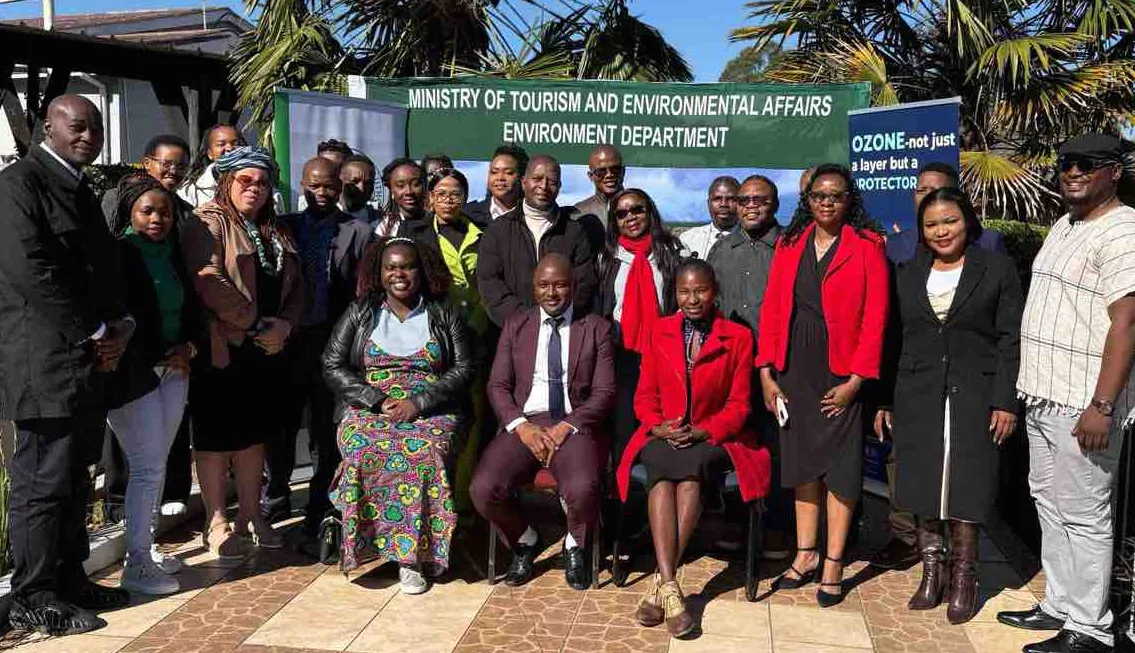|
Getting your Trinity Audio player ready...
|
Zimbabwe is forecast to receive normal to above-normal rains in the October-November-December (OND) period as well in the last half of the 2021 -2022 cropping season – January – February – March (JMF) (2022) phase, the Zimbabwe National Climate Outlook Forum (2021) has revealed.
The country is demarcated into three (3) zones according to the country’s climate drivers.
Speaking at the Zimbabwe National Climate Outlook Forum (2021)in Harare yesterday, the Acting Minister of Environment, Climate, Tourism and Hospitality Industry, Honourable Oppah Muchinguri-Kashiri said the forecast was derived from statistical analysis, other climate prediction schemes, and expert interpretation (including personnel from academic institutions).
“The climate scientists determined the likelihoods of above-normal, normal-to-above normal, normal-to-below normal, and below-normal rainfall for each of the three regions that the country is subdivided into for the sub-seasons that is October-November-December (OND), and January-February-March (JFM),” said Minister Muchinguri-Kashiri.
The seasonal outlook for the 2021/22 Rainfall season was presented by the Minister and follows:
The rainfall outlook for the October to December (OND) 2021 period:
Region I: Harare Metropolitan, much of Mashonaland East, Mashonaland West, Mashonaland Central, north-eastern parts of Midlands, most of Manicaland with increased chances of normal-to-above normal rainfall.
Region II: The greater part of Matabeleland North, parts of Bulawayo Metropolitan, parts of Midlands, and parts of Mashonaland West with increased chances of normal-to-above normal rainfall.
Region III: Masvingo, the bulk of Midlands, the bulk of Bulawayo Metropolitan, the extreme southern parts of Manicaland, and the bulk of Matabeleland South with increased chances of normal-to-above normal rainfall.
As for the rainfall outlook for the January to March (JFM) 2022 period, the forecast was presented as follows:
Region I: Mashonaland Provinces, Harare, most of Manicaland, northern parts of Masvingo and northern parts of Midlands to have increased chances of normal-to-above normal rainfall.
Region II: The greater part of Matabeleland North, northwest Matabeleland South, Bulawayo. Increased chances of normal-to-above normal rainfall.
Region III: The greater part of Masvingo, the extreme southern parts of Manicaland, southeast Matabeleland South, and the southern parts of Midlands. Increased chances of normal-to-above normal rainfall.
Minister Muchinguri-Kashiri said the seasonal rainfall outlook is of paramount importance in as much as best planning and achieving certain goals for the nation is concerned.
“It is my pleasure to be hosting you today for the presentation of our National Rainfall Outlook for the period October 2021 to March 2022. The seasonal rainfall outlook is a very important planning tool for use by multi-sectoral stakeholders throughout our beloved country.
“The information provided contributes very significantly to the socio-economic development of the nation as we work towards achieving our vision of having an upper-middle-income economy by 2030,” she said.
She highlighted that increased use of the weather and climate information in the various sectors will thereby assist in better planning to reduce the impacts of extreme weather events, expected to be more frequent as a result of climate change changing.
Referring to the most recent Intergovernmental Panel on Climate Change (IPCC) report, released last month, she pointed out that climate change and its impacts were rapidly accelerating around the world, and as a nation, Zimbabwe was not spared either.
She stressed the need to take effective measures to curb climate change.
“Climate and weather extremes are continually increasing as we have already observed in recent years. It is therefore important for all of us to take the appropriate climate action now.”
In coming up with this year’s forecast, added the Minister, the climate scientists took into account oceanic (sea surface temperatures) and atmospheric factors that influence our climate over the country including the El Niño-Southern Oscillation (ENSO) and the Indian Ocean Dipole (IOD).
It has been highlighted that the ENSO is currently in its neutral phase but projected to shift into the La Niña phase during parts of the forecast period.
The La Niña phase is the cooler phase of the ENSO and is usually associated with favourable rainfall conditions over the country. The IOD.
The past 2020/2021 rainfall season was also associated with the La Niña phase.
“Regional climate experts noted that there were greater chances of a La Nina, a weather event normally associated with wetter conditions. It was a generally good rainfall season with the bulk of the rains received from December into February. As most will recall, January to March was wet with a few incidences of dry spells. We also experienced a few tropical cyclones and the effects were minimal. However, it is important to note that no two seasons are identical.”
The forecast, she highlighted, is for total cumulative seasonal rainfall amounts, and is expressed relative to the long-term averages particular to specific locations.
“The forecast should be used together with the periodic updates which will be issued daily, as well as the 3-day and 10-day forecasts, issued by the Meteorological Services Department to account for the distribution of rainfall during the season.”
The Meteorological Services Department, she said, will continue to monitor all the available seasonal climate indicators which influence Zimbabwe’s rainfall as they evolve.
“Thus, the seasonal rainfall predictions will be updated on a monthly basis, from the end of October onwards.”
Minister Muchinguri applauded the Meteorological Services Department, partner organisations, and all of those who supported the work that was done in coming up with the forecast.
“I also look forward to the rainfall season and hope that we will all prepare according to maximize on the benefits of the forecast and also reduce the dangers that also arise when we have a season as forecasted,” she added.
Meanwhile, according to a recent seasonal forecast from the 25th Southern African Regional Climate Outlook Forum (SARCOF 25), Zimbabwe is forecast to receive improved rains which are likely to further replenish ground and dam water resources bolstering water, food, and energy security for the country.
Zimbabwe is expecting some 1,8 million tonnes of maize and 200 000 tonnes of traditional grains in one of the best harvest seasons in decades, due to good rains received last season.






